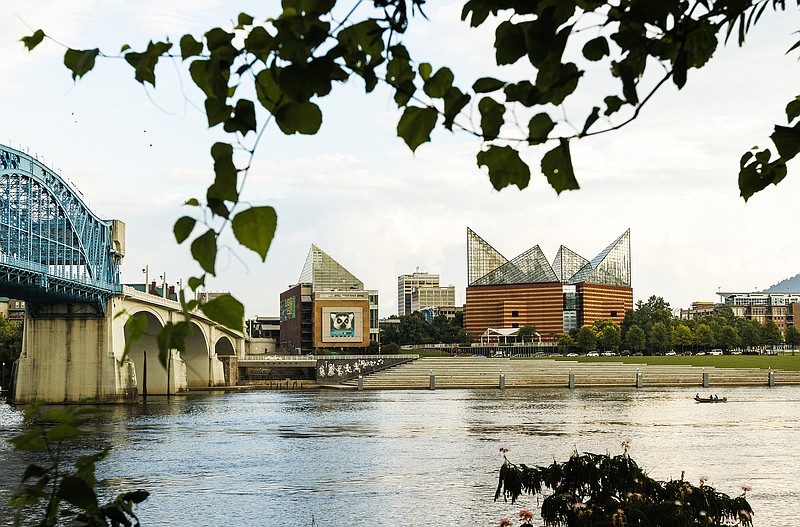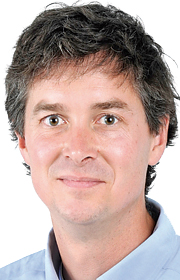A few weeks ago, the Urban Institute released an online database that measures inclusion in 274 of the largest U.S. cities, along with an accompanying report "Inclusion Recovery in U.S. Cities."
"Everyone should have the opportunity to contribute to and benefit from economic prosperity," the institute proclaims. "This is our definition of inclusion."
An inclusive city contains wealth that is tasted not just by some, but all, especially "historically excluded populations," as the institute says.
Using data from 1980-2013, the institute measured two types of inclusion.
Economic inclusion.
And racial inclusion.
Both reflect the ability of residents - either residents of color or residents with lower incomes - to participate in and enjoy a city's economic growth.
The institute measured economic inclusion through income segregation, housing affordability, dropout rate for high-schoolers, and the percentage of working poor residents.
Racial inclusion was measured through racial segregation, racial gaps - in home ownership, poverty and education - and the percentage of residents of color.
So, how inclusive is Chattanooga overall?
Out of 274 cities, Chattanooga ranked 199th. We're behind Baltimore (168th). And Ann Arbor, Michigan (46th.) And Columbus, Georgia (152nd). But not Knoxville. (245th).
In terms of economic inclusion, Chattanooga ranked 138th.
And racial inclusion? We're near the bottom: 231st.
Overall, our economic health dropped between 2000-2013.
The percent of rent-burdened residents soared. Racial gaps in home ownership and poverty also increased.
From 2000-2013, at the height of our Gig-City-Best-City growth, Chattanooga actually became less inclusive.
Which means the story we keep telling ourselves and the world - The Best City in the South + The Boulder of the East - seems more like a fish tale, getting bigger and bigger at the expense of what is really happening.
Like this: There are nearly 200 other U.S. cities more inclusive than we are.
Earlier this year, The Washington Post reported that Chattanooga had the most lopsided and unbalanced ratio of white-to-black newcomers.
In other words, most of our growth is centered on white Chattanoogans.
Wealthier white Chattanoogans.
"We need more culturally competent, racially aware, socially conscious and engaged and inclusive- minded leaders and citizens, who are capable and willing to work with everyone for the good of all residents of this city," said Theresa Turner.
Turner, an African- American, is our area's UniServ coordinator for Tennessee Education Association. She grew up in Tennessee, then moved away - Indiana, Washington, D.C., Arizona - before returning in 2010.
"I'm sad to say that Chattanooga is just as culturally alienating and residentially segregated for the majority of black and brown people as I recall it being in 1970," she said.
For Turner, there are three key questions Chattanooga leaders must face.
-"Who's missing among the employment ranks of the private and public organizations, businesses and companies?"
-"Who's absent from the decision-making, influential, public and private civic boards, councils, and task forces in Chattanooga and Hamilton County?"
-"Which leaders and citizens in Chattanooga actually pursue, groom, invite and include members of multicultural and multiracial groups to be at the tables of enterprise, entrepreneurship and upwardly mobile opportunities in Chattanooga?"
View other columns by David Cook
When the bodies of power are mostly homogeneous and the realms of decision- making and developing are exclusive and understanding is limited only to upper-class experiences, then people are forgotten and historically excluded.
And inclusion shrinks.
It's like some Newtonian Law of Urban Growth: the people in the room making decisions will be the ones who often benefit the most.
And the people not in the room will benefit the least.
That's why we can transform downtown, Main Street, North Shore and South Broad Street, while other neighborhoods remain stagnant and neglected.
"We need leaders and citizens in every corner of this city, who are serious and intentional about modeling and practicing equity, rather than just studying and talking about it," Turner said.
I asked for specific names of folks here doing that; here's her answer:
Pete Cooper, Ron and Rosalyn Harris, Dr. Everlena Holmes, Dr. Edna Varner, Sherman Matthews, Tresa and Franklin McCallie, Holly Ashley, Dr. Bryan Johnson and Candy Johnson, Stacy Lightfoot, Jonathan Butler, Ellis and Kathy Gardner, Eva Jo Johnson, Dollie Hamilton, Elizabeth Williams, Leslie Scearce, Cary Garrett, Judy Schwartz, Ardena and Bill Hicks, Eleanor and Mel Cooper, Waynetta Dowdell, Jenny Shugart, Jermaine Freeman and Nathan and Danna Vaughn.
"Just to name a few," she said.
It's a magnificent list.
And you and I can both think of more people who belong on it.
But that list needs to grow.
Because until it does, our city will not.
David Cook writes a Sunday column and can be reached at dcook@timesfreepress.com or 423-757-6329. Follow him on Facebook at DavidCookTFP.

